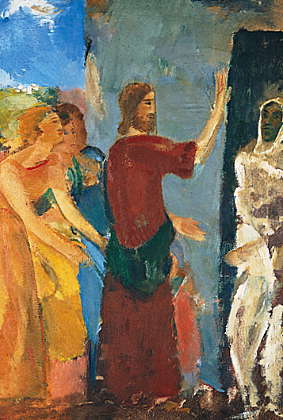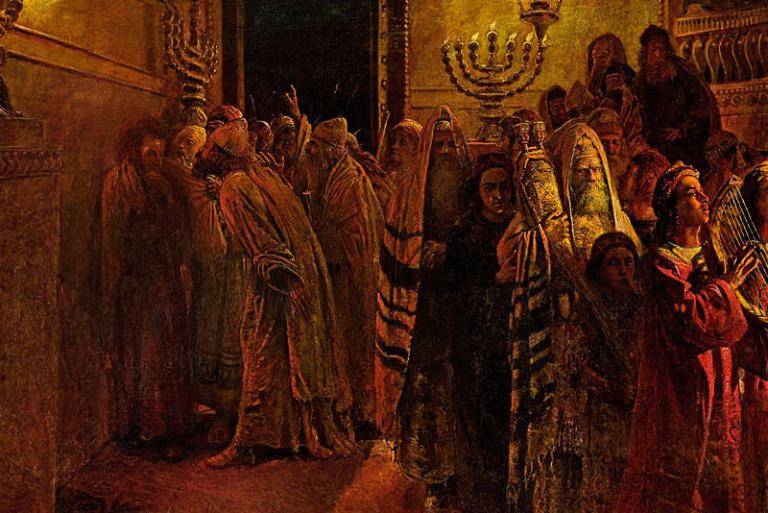
(Jesus awakens Lazarus)
Karl Isakson (1921)
1.
Bethany is just over the Mount of Olives from Jerusalem. Jesus, who probably had little money, seems to have stayed there with his friends Mary, Martha, and Lazarus (= El‘azar or Eleazar) when he was in Judea. Then he would walk over the hill to Jerusalem, along a road that still runs directly past (or through) the Garden of Gethsemane.
2.
When Jesus heard the news that Lazarus was very ill, he deliberately took his time before acting on the sisters’ implicit request that he come. This was probably intended to allow him to demonstrate his power over death. In that regard, Christ’s raising of Lazarus represents the climax of John’s series of miracles, and it foreshadows his own resurrection. It was also far too public and spectacular a demonstration of his power to be ignored by the authorities, who had been watching him with concern and who now felt compelled to act.
3.
The apostle Thomas is often remembered for his proverbial doubts. But he should also be recalled for his courage: First the disciples try to persuade Jesus not to return to Judea because it’s too dangerous. When it’s clear, though, that he’s going to go nonetheless, Thomas exhorts them: “Let us go also, that we may die with him.”
4.
The faith that both Mary and Martha had in Jesus is shown by the declaration, made by each, that, had Jesus only been there in time, Lazarus wouldn’t have died.
5.
The shortest verse in all of scripture is John 11:35: “Jesus wept.” Yet it’s also among the most profoundly significant. I wrote a column on divine emotion back at the beginning of 2014:
http://www.deseretnews.com/article/865595143/The-most-moved-mover.html?pg=all
I still regard this as a vitally important theological point.
And if, as passages such as Colossians 1:15 and Hebrews 1:3 suggest, Christ is a perfect representation of the Father, the emotion on display in John 11 is profoundly significant.
6.
There can scarcely be a more comforting verse in the canon than John 11:25:
“I am the resurrection and the life; he who believes in me, though he die, yet shall he live.”

Compare Matthew 26:1-5; Mark 11:18; 14:1-2; Luke 19:47-48; 22:1-2
It’s the miracle of the raising of Lazarus — far too spectacular and far too public to be ignored — that seems to have finally impelled the Jewish leadership in Jerusalem to seek Jesus’ life. That miracle was simply too big, too obvious, too attractive, for them to let it pass without response.
For some background on Caiaphas’s comment that “it is expedient that one man should die for the people, and that the whole nation should not perish,” see the brief discussion by John W. Welch and Heidi Harkness Parker here.
Scroll down to the heading “Better That One Man Perish.”

Wikimedia Commons public domain
(Incidentally, scrolling through that 1998 issue of Insights was a bit nostalgic for me. That’s the kind of thing that FARMS, later the Maxwell Institute, used to do.)











